27 Indian Kitchen Organization Ideas to Make Cooking Smoother and Simpler
An Indian kitchen is often full of flavor, tradition, and variety—but that also means it can get pretty chaotic if things aren’t organized well. From spices and pulses to cookware and utensils, there’s a lot to manage. Whether you cook daily or just on weekends, these Indian kitchen organization ideas can help you save time, reduce stress, and make your space feel more put together and easier to use.
1. Use Transparent Spice Containers
Indian cooking often involves dozens of spices. Using uniform, transparent spice jars helps you find what you need quickly and makes your spice shelf or drawer look neat. Label them clearly (in English or your mother tongue) for easy identification.
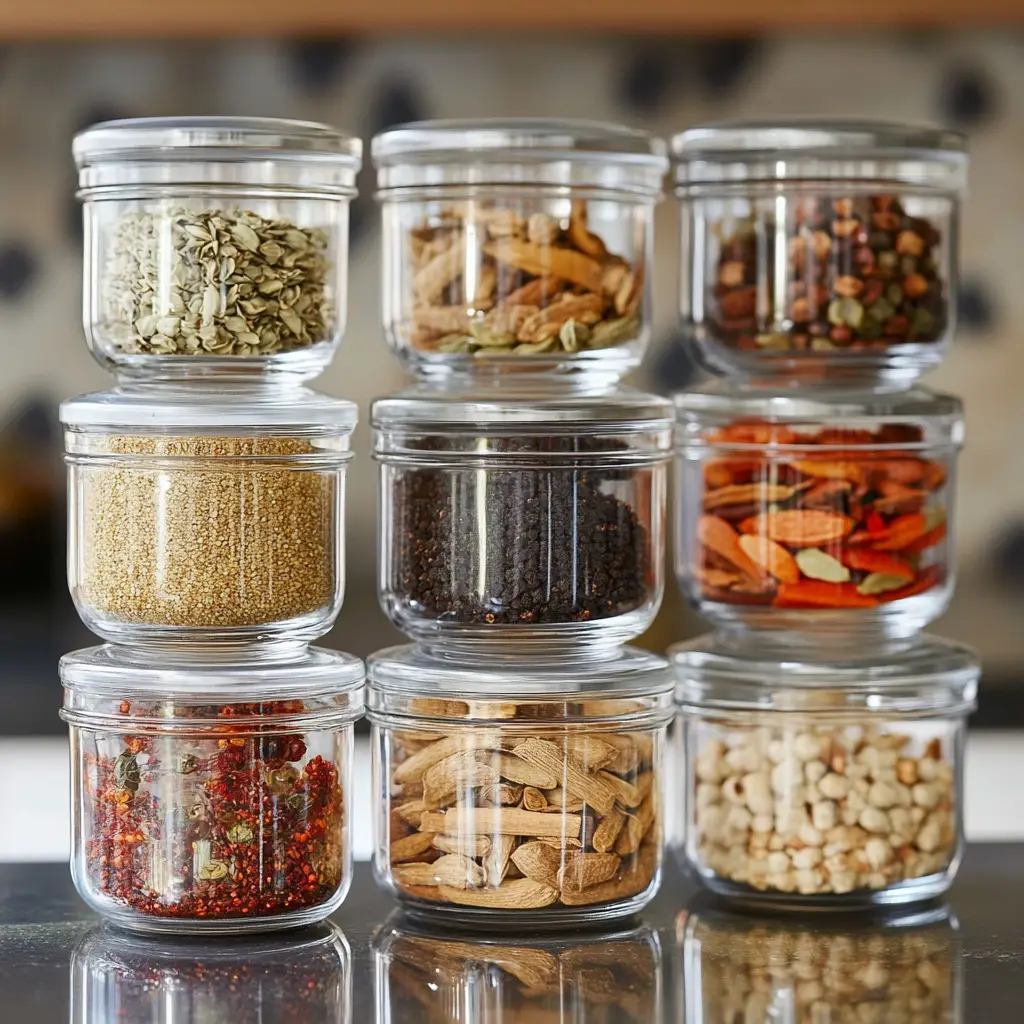
2. Invest in a Masala Dabba
A masala dabba (spice box) is a must-have in most Indian kitchens. Keep your most-used spices—like mustard seeds, turmeric, cumin, and chili powder—in one place. It keeps your counter clean and makes seasoning your tadka quick and easy.

3. Stackable Containers for Grains and Pulses
Dal, rice, atta, and other staples take up a lot of space. Use airtight, stackable containers for these items to save room and keep things fresh. Group them by type and place labels on the front for quick access.
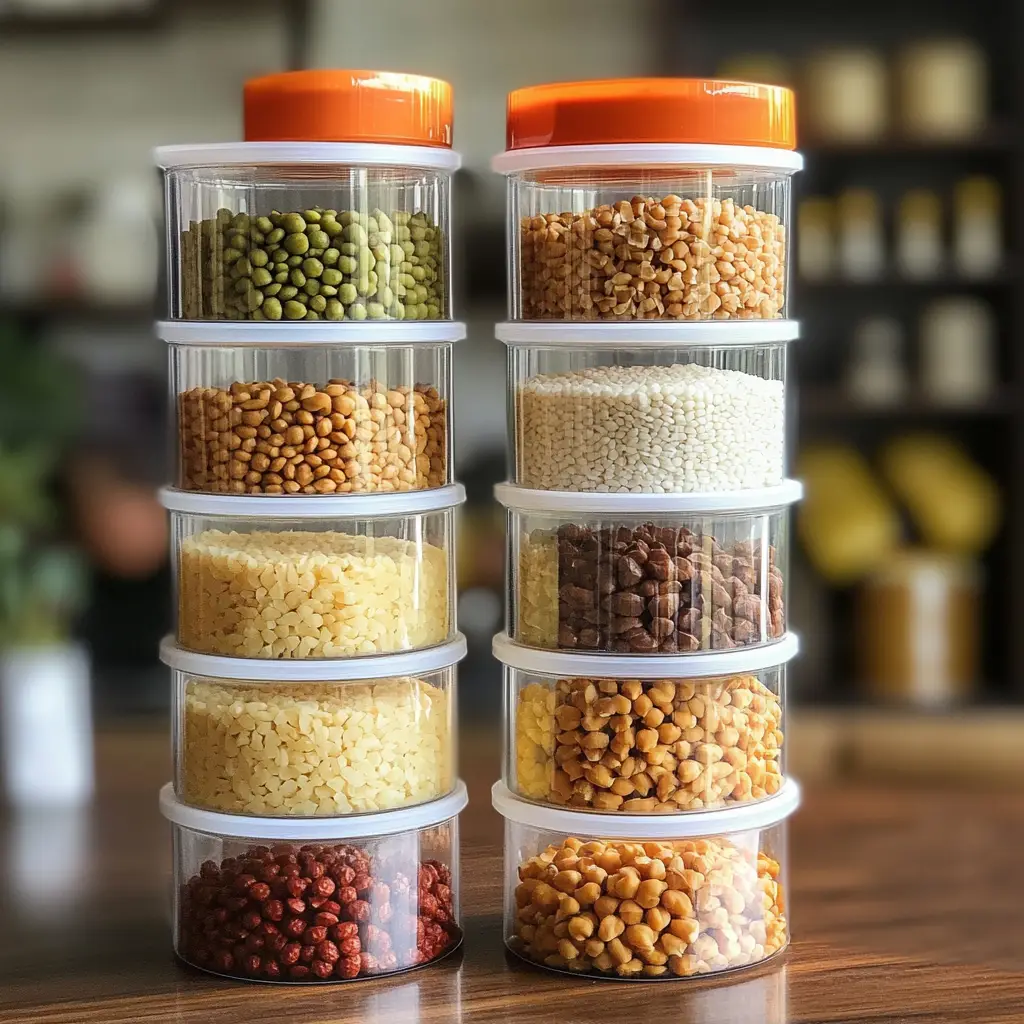
4. Use Pull-Out Baskets for Onions and Potatoes
Onions, potatoes, and garlic don’t need refrigeration—but they do need proper air circulation. Use wire baskets or mesh drawers that slide out from the lower cabinets. This prevents spoilage and keeps them separate from other groceries.
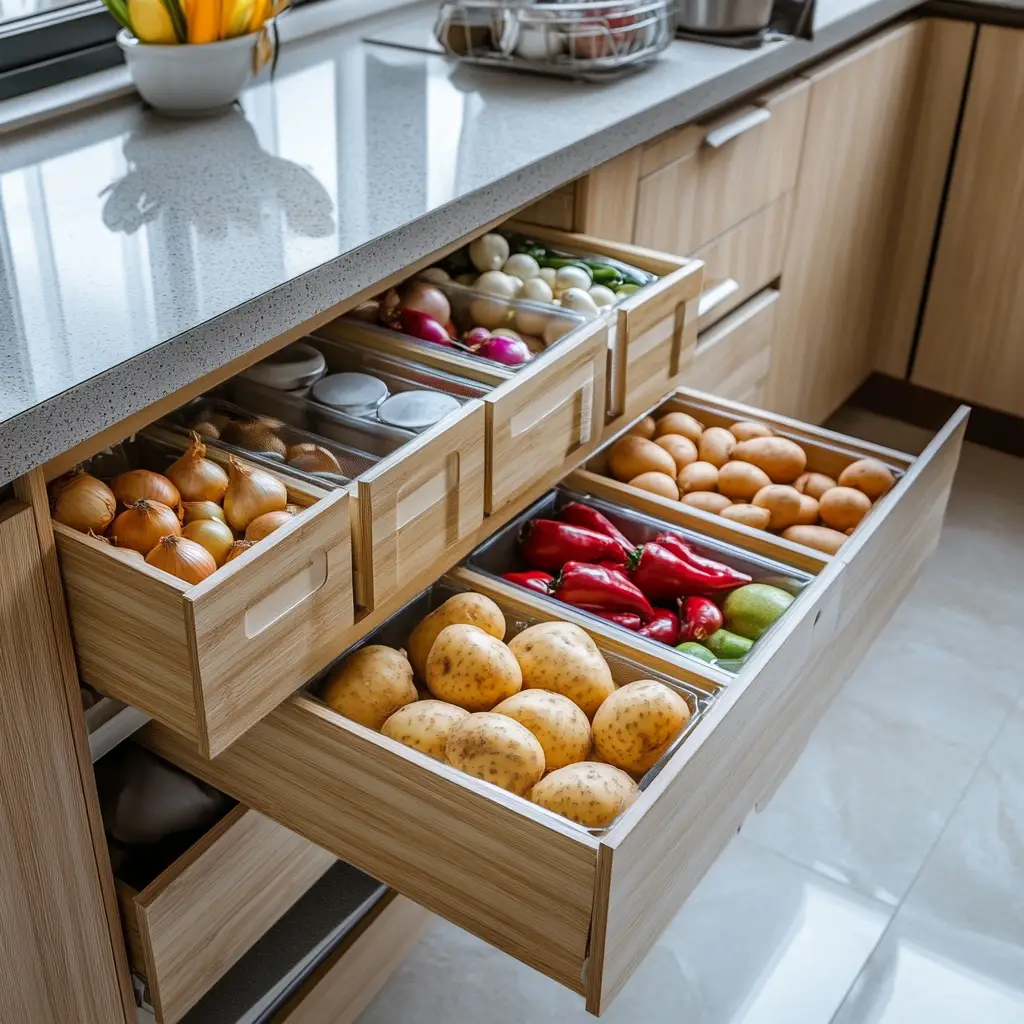
5. Divide Your Utensils by Use
Indian cooking uses a variety of tools—from spatulas and ladles to small strainers and rolling pins. Organize these by type or function in separate drawers or containers. Keep the most-used ones close to the stove for convenience.

6. Store Cookware Vertically
Thalis, kadais, pressure cookers, and tavas take up a lot of cabinet space. Use vertical racks or pan organizers to store them upright. This makes it easier to pull out the one you need without shifting a whole pile.
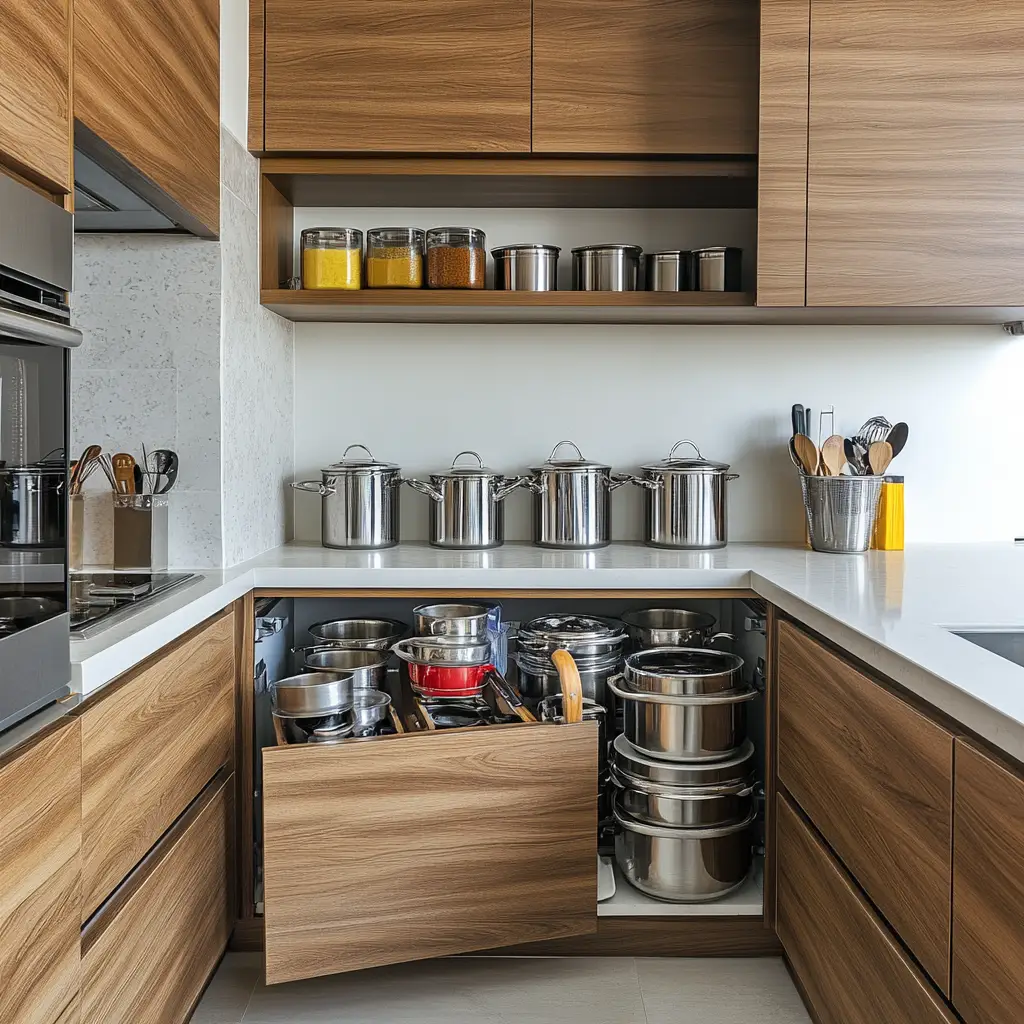
7. Create Zones for Daily Essentials
Designate one part of your kitchen for daily-use items like ghee, oil, salt, your masala dabba, and tea supplies. Having a go-to zone prevents running around and helps you maintain a consistent cooking rhythm.
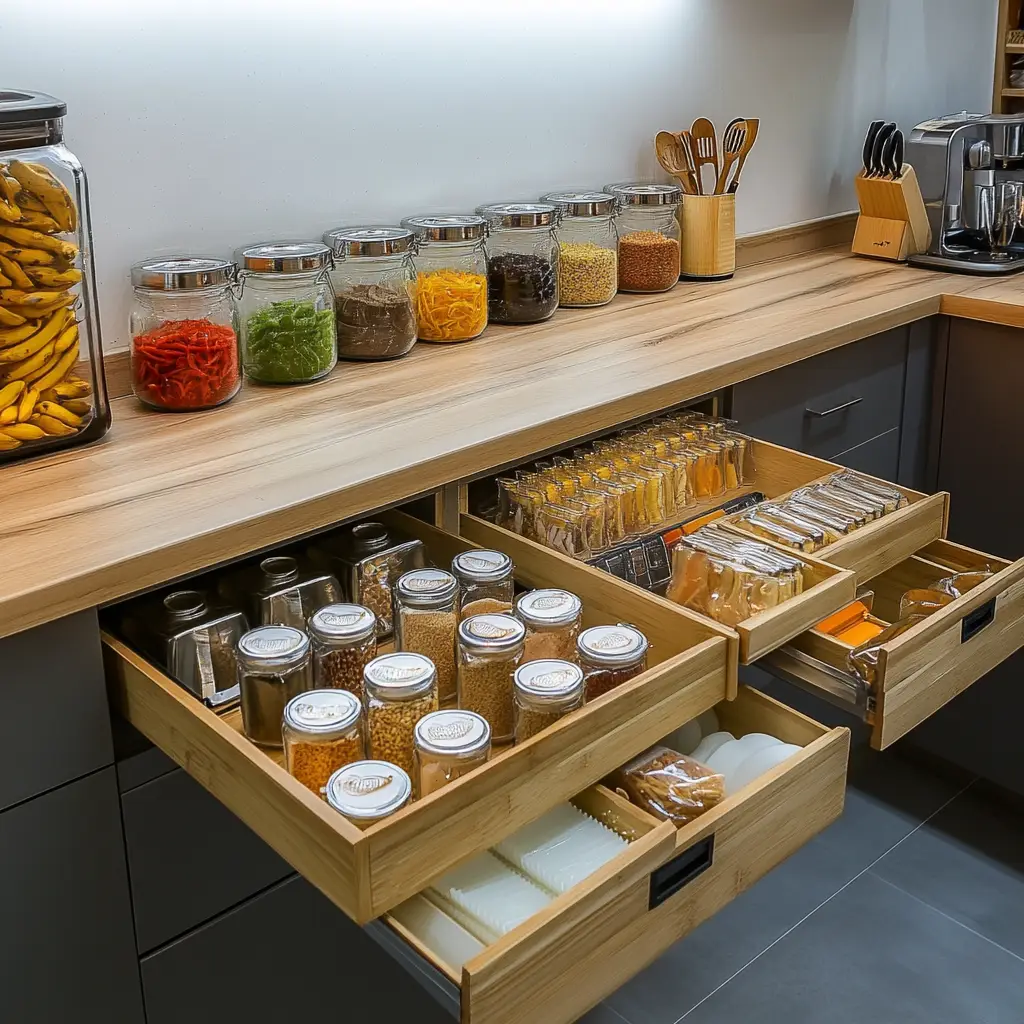
8. Keep a Tray for Tadka Ingredients
Tadka is the heart of Indian cooking. Keep a small tray with mustard seeds, cumin, curry leaves, dry red chilies, and hing. This makes it super easy to start any dish without rummaging through the spice cabinet.

9. Hang Your Cooking Tools
If drawer space is limited, hang larger utensils like tongs, chimtas, or even your chakla belan on hooks or a wall-mounted rail. It frees up space and keeps everything within arm’s reach.
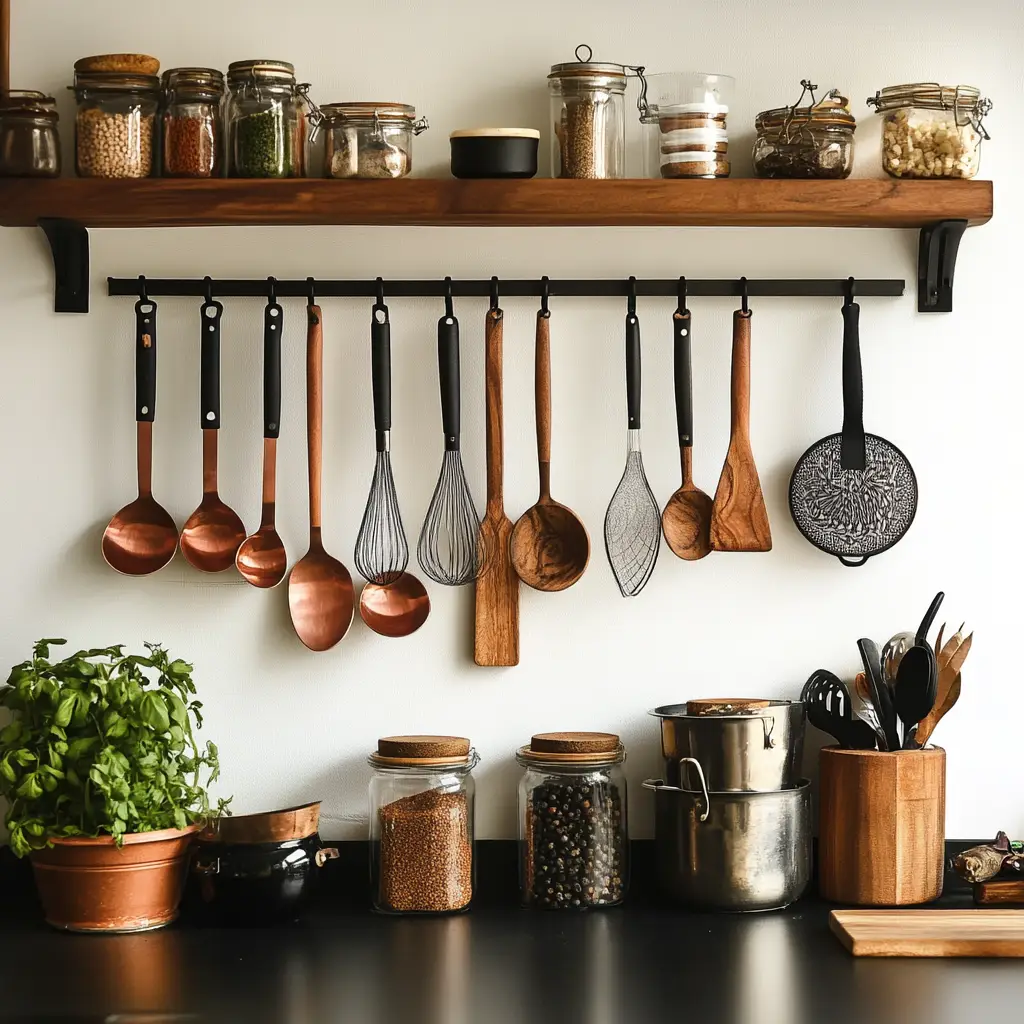
10. Use Labels in Multiple Languages
If multiple people cook in your kitchen—like parents, roommates, or helpers—label your containers in English and your regional language (like Hindi, Tamil, Bengali, etc.). It helps everyone know what’s what and keeps things running smoothly.
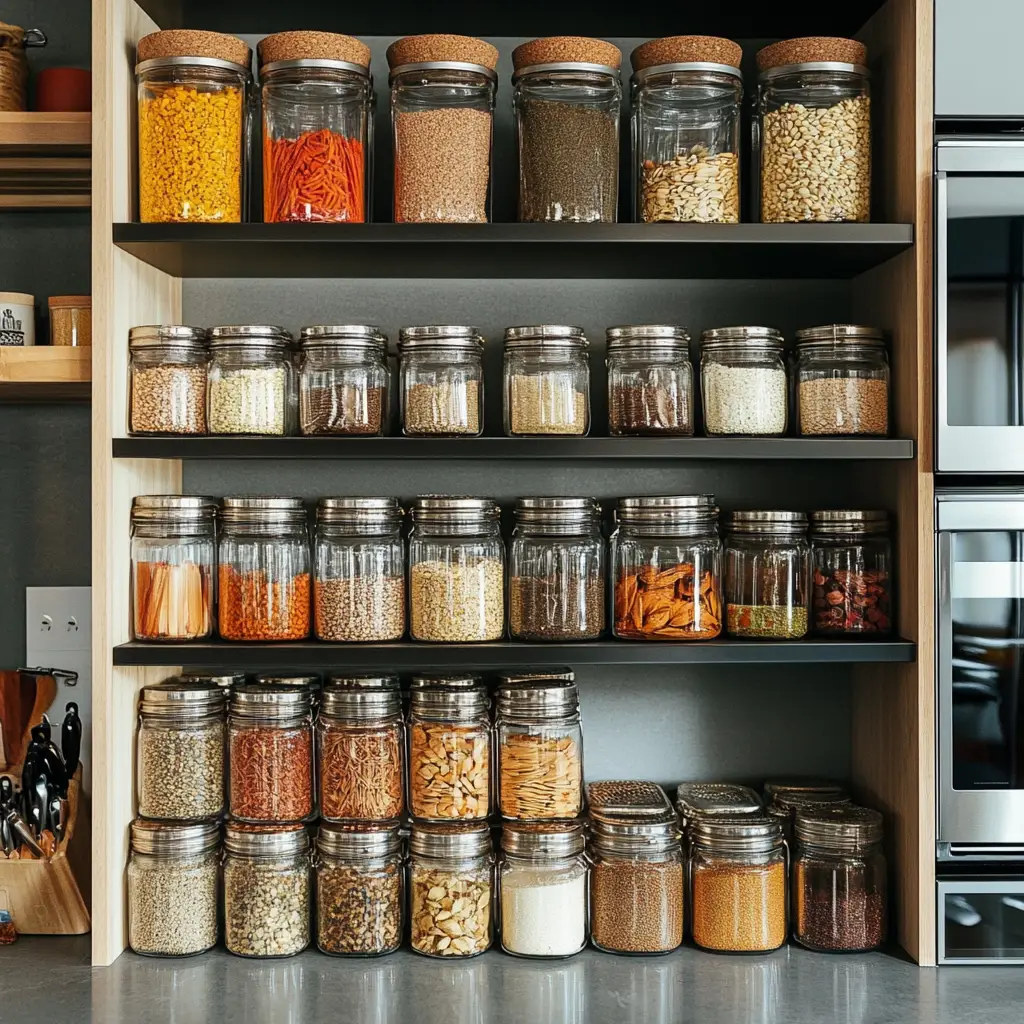
Frequently Asked Questions
How can I keep my Indian kitchen organized daily?
Make a habit of resetting your kitchen at the end of each day. Wipe surfaces, return items to their places, and do a quick check of staples like dal, rice, and spices to restock if needed.
What’s the best way to organize Indian spices?
Use transparent containers with labels and keep them in a drawer, rack, or pull-out shelf. For quick access, use a masala dabba for everyday spices and organize the rest by cuisine or frequency of use.
How do I store heavy utensils like pressure cookers and kadais?
Use lower cabinets with strong shelves, and if possible, store them vertically with a pan organizer. Make sure they are easily accessible, especially the ones used daily.
What’s a good system for grocery storage in an Indian kitchen?
Group groceries by type: pulses, grains, snacks, spices, and flours. Store them in labeled containers, and keep older stock in front to use first (first in, first out system).
Conclusion
Indian kitchens are beautifully busy spaces, filled with flavors and memories. But without proper organization, they can quickly become overwhelming. These Indian kitchen organization ideas are simple but effective ways to bring order and ease into your daily cooking routine. With the right containers, labels, and zones, you’ll spend less time searching for things and more time enjoying the cooking process.